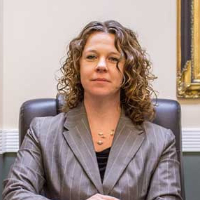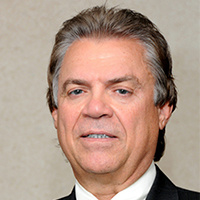William H. Taft, Attorney
William H. Taft 
Mass Torts, Government, General Practice
513-684-3262
- Profile LAWPOINTS™23/ 100LAWPOINTS™ measure the overall completeness of a Lawyer's profile. More complete profiles are ranked higher and help visitors select the right lawyer faster.
We help paid Members build more complete and informative profiles.
LAWPOINTS™ do not measure a Lawyer's reputation.
More Info for Lawyers - No Misconduct Found ✓
- Reviews Pro Bono Cases ✓
- Upgrade to a premium listing
- Update your listing
- LAWYERID™ Not AvailableLawyerID™'s identify each individual within Lawyer.com’s directory of 2M global lawyers and help to ensure that the most accurate, up-to-date records are being kept on every lawyer. If you are a practicing lawyer without a LawyerID prominently displayed on your Lawyer.com profile, please call 800-840-0600 to receive one.
Contact Us
introduction
Taft was born in Cincinnati, OH on September 15, 1857. His father, Alphonso, was a US Attorney General and the Secretary of War. Taft graduated from Yale College in 1878, and completed his Bachelor of Laws at Cincinnati Law School in 1880. Taft sat for the Ohio bar before graduating and passed the exam, having spent time reading the law in his father's office. He worked at the Cincinnati Commercial newspaper in law school and after graduating.
In January 1881, Taft became the assistant prosecutor for Hamilton County. He resigned in 1882 to take the position of Collector of Internal Revenue for Ohio's First District, a role appointed by President Chester A. Arthur. Taft left his post in 1883 to pursue private law practice. In 1884, he campaigned for Republican presidential hopeful James G. Blaine, a senator from Maine. Blaine lost to New York Governor Grover Cleveland.
Taft continued rising through the ranks of law and politics. He filled a vacant position on the Superior Court of Cincinnati in 1887, and won the election for a five-year term in 1888. Taft authored over a dozen opinions as a state judge, including Moores & Co. v. Bricklayers' Union Co., 1889.
Later in 1889, Taft was approached to fill a vacant position on the US Supreme Court, a job that he'd always desired. Taft did not receive that nomination, and instead became Solicitor General of the United States. He won 15 out of 18 cases argued before the Supreme Court before resigning in 1892 to continue his judicial career.
In 1892, Taft became a judge in the Sixth Circuit. He held the position through 1900. Taft supported labor rights and strikes, ruling against employers in Voight v. Baltimore & Ohio Southwestern Railway Co., and again in United States v. Addyston Pipe and Steel Co. With a dedicated passion for law, he accepted a teaching position in property law at Cincinnati Law School.
Taft moved to the international arena in 1900, when President McKinley asked him to organize a civilian government in the Philippines. Taft became civilian governor in 1901, after turmoil from the Philippine Revolution, which became the Philippine-American War, died down. With his success in the Philippines, Taft was nominated by President Theodore Roosevelt as the Secretary of War in 1903. He officially resumed the role in 1904.
Taft worked closely with Roosevelt as Secretary of War, and he laid the groundwork for his presidential campaign in 1908. His international diplomacy proved critical for US-Cuba relations. Under the Cuban-American Treaty of Relations of 1903, Taft appointed himself Provincial Governor of Cuba. He held the position for a mere two weeks, and was succeeded by Charles Edward Magoon. Taft remained active in Cuba during the early 1900s and formed the Philippine Assembly in 1907.
Taft, following the advice of Roosevelt, ran for president in 1908 as part of the Republican Party. His main opponent was Democrat William Jennings Bryan, who ran for president in 1909 in the third time out of four elections. Taft drew considerable support from Theodore Roosevelt, and defeated Bryan by a margin of 321 to 162 electoral votes.
As president, Taft focused on protectionism through tariffs. He signed the Payne-Aldrich tariff into law in 1909, which drew controversy. Taft also encouraged free trade with Canada, but Canada's election of Robert Borden in 1911 eliminated the potential for a US-Canada agreement. Taft also pursued diplomacy with Latin America, and instituted the policy of Dollar Diplomacy. Relations were more tense with Nicaragua, however; Nicaraguan president Jose Santos Zelaya revoked concessions for American corporations, leading to Taft's deployment of military troops to Nicaragua in 1911. The US occupation of Nicaragua lasted until 1933. Taft also focused on extending diplomacy to East Asia, and he settled matters with European nations through diplomacy and negotiation.
At home, Taft expanded upon Roosevelt's antitrust campaigns. His government brought suits against several big-name companies, including United States Steel and the International Harvester Company.
Taft differed from Roosevelt in his stance on conservation and civil rights, however, proving more conservative on both issues than his predecessor. Throughout his presidency, Taft appointed six judges to the Supreme Court. He also selected 13 federal judges and appointed 38 judges to various US district courts. His administration created the Commerce Court in 1910, which was designed to hear appeals from the Interstate Commerce Commission.
In preparation for the 1913 presidential campaign, Taft found that he was soon opposing his former ally, Theodore Roosevelt. While Taft's strategies shifted farther right, Roosevelt veered to the right. Taft resolved to achieve re-nomination in the upcoming election, while Roosevelt's supporters increasingly encouraged him to run. Taft was chosen as the Republican candidate, but he lost by a significant margin to Democratic nominee Woodrow Wilson, then the Governor of New Jersey.
In 1913, Taft accepted a teaching position as Kent Professor of Law and History at Yale Law School. He was also elected president of the American Bar Association in 1913, a position that he held for one year. Taft maintained a friendship with his successor, Woodrow Wilson. Taft was appointed president of the League to Enforce Peace by Wilson, and in 1917 he became chairman of the American Red Cross. He also supported Wilson's establishment of the League of Nations.
Taft became the Chief Justice in 1921, as appointed by Attorney General Harry Daugherty, and held office through 1930. He continued supporting the Republican Party, and was called upon to advise Republican senators. On the Supreme Court, Taft produced a conservative record in Commerce Clause jurisprudence. His restrictions made it difficult for the federal industry and overrode numerous state laws. Along with fellow Supreme Court justices, Taft handled the cases of Balzac v. Porto Rico, which involved a newspaper publisher prosecuted for libel; Myers v. United States, which asserted that Congress could not require the president to get Senate approval before removing an appointee, and McGrain v. Daugherty, where the court decided Congress did not have the power to seize documents from a former Attorney General involved in a scandal. Taft also applied the Bill of Rights against states with the Fourteenth Amendment in 1925. In that same year, the court declared the First Amendment's Free Speech and Free Press clauses safe from state infringement. In Pierce v. Society of Sisters, Taft ruled against an Oregon decision banning private schools. He decided instead that the state could regulate private schools. Taft also held that the state and federal governments were dual sovereigns. Taft's health began to decline in the late 1920s, and he died on March 8, 1930.
QUESTIONNAIRE
Experience
| Position | Organization | Location | Duration |
|---|
Education
| School | Degree | Major | Graduation |
|---|---|---|---|
| Yale College | Bachelor | 1878 |
Admission
| State / Court |
|---|
Associations
Honors & Awards
Cases
Moores & Co. v. Bricklayers’ Union No. 1 (1889) Voight v. Baltimore & Ohio Southwestern Railway Co. United States v. Addyston Pipe and Steel Co. Hammer v. Dagenhart (1918) Bailey v. Drexel Furniture Co. (1922) Balzac v. Porto Rico (1922) Adkins v. Children’s Hospital Myers v. United States Gitlow v. New York (1925) Pierce v. Society of Sisters (1925) McGrain v. Daugherty (1927) United States v. Lanza
Publications
Office Hours
| Sun. | Mon. | Tue. | Wed. | Thu. | Fri. | Sat. |
|---|---|---|---|---|---|---|
Verified Credentials
Lawyers with longer memberships tend to have more experience so we use the Membership date to help prioritize lawyer listings on search pages.
| Verified Credentials | Date Verified |
|---|
Above credentials have been verified independently by Lawyer.com.
Learn More
Legal Articles
Peer Endorsements
Additional Info
Service Type: Private
To recommend or link to this lawyer as a trusted attorney, we have provided a list of sample links. Please choose the one that meet your needs.
Want a Premium Customized Photo Badge?
Call Toll Free: 800-620-0900

Image Link 1
<div id="Lcom"><a href="//www.lawyer.com/william-h-taft.html"><img alt="Lawyer.com" src="//www.lawyer.com/seal/4479267i.png"></a></div><script type="text/javascript" src="//www.lawyer.com/seal.js"></script>
Image Link 2
<div id="Lcom"><a href="//www.lawyer.com/william-h-taft.html"><img alt="Lawyer.com" src="//www.lawyer.com/seal/4479267p.png"></a></div><script type="text/javascript" src="//www.lawyer.com/seal.js"></script>
Image Link 3
<div id="Lcom"><a href="//www.lawyer.com/william-h-taft.html"><img alt="Lawyer.com" src="//www.lawyer.com/seal/4479267f.png"></a></div><script type="text/javascript" src="//www.lawyer.com/seal.js"></script>
Image Link 4
<div id="Lcom"><a href="//www.lawyer.com/william-h-taft.html"><img alt="Lawyer.com" src="//www.lawyer.com/seal/4479267v.png"></a></div><script type="text/javascript" src="//www.lawyer.com/seal.js"></script>
Text Link 1
<div id="Lcom" style="width:250px;text-align:center;background-color: #fbaa02;padding:3px;"><a href="http://www.lawyer.com/william-h-taft.html" style="color: #fff;text-decoration:none;size: 12px;">Lawyer.com Listed: William H. Taft</a></div> <script type="text/javascript" src="http://www.lawyer.com/seal.js"></script>
Change History
2038 Auburn Ave.
Cincinnati, OH 45219



















